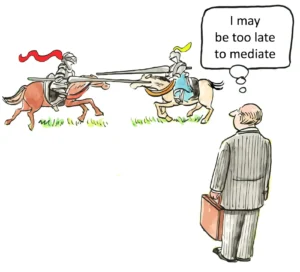What Common Mistakes Should I Avoid When Arguing a Case Based on Arbitrary and Capricious Standards?
When presenting arguments challenging agency decisions under the arbitrary and capricious standard, attorneys frequently make critical errors that undermine otherwise viable claims. This legal standard, which serves as the primary basis for judicial review of administrative actions, requires agencies to demonstrate reasoned decision-making supported by substantial evidence. Avoiding common mistakes when formulating these arguments can significantly improve your chances of successfully challenging agency determinations that fail to meet this standard. As courts continue to refine their application of this doctrine in 2025, understanding these pitfalls becomes increasingly important for effective advocacy.
The arbitrary and capricious standard derives from the Administrative Procedure Act (APA) and similar state laws, providing courts with the authority to invalidate agency actions that lack rational basis or fail to consider relevant factors. While this standard generally affords substantial deference to agency expertise, it nonetheless requires agencies to articulate logical connections between evidence and conclusions. Attorneys who misunderstand the proper application of this standard often pursue ineffective strategies that courts readily dismiss, wasting valuable opportunities to secure favorable outcomes for their clients.
Misunderstanding the Standard’s Fundamental Purpose
One of the most prevalent mistakes attorneys make is fundamentally misinterpreting the purpose and scope of the arbitrary and capricious standard. This misunderstanding leads to arguments that miss the mark entirely, focusing on irrelevant considerations while neglecting the core issues courts examine. The standard is not designed to allow courts to substitute their judgment for that of agencies, but rather to ensure agencies engage in reasoned decision-making processes.
Many practitioners erroneously approach arbitrary and capricious challenges as opportunities to relitigate the substantive merits of agency decisions. This approach inevitably fails because courts explicitly avoid second-guessing agency expertise or policy judgments when applying this standard. Instead, courts focus on whether the agency considered relevant factors, explained its reasoning, addressed significant comments, and established a rational connection between facts and conclusions. Arguments that simply assert the agency reached the wrong conclusion, without identifying specific flaws in the decision-making process, rarely succeed.
Another common misunderstanding involves conflating the arbitrary and capricious standard with other administrative law doctrines. For example, attorneys sometimes confuse this standard with Chevron deference, which applies specifically to agency statutory interpretations. While these doctrines may intersect in certain cases, they involve distinct analyses and considerations. Failing to distinguish between them leads to confused arguments that courts find unpersuasive. Effective advocacy requires precision in identifying which standard applies and tailoring arguments accordingly.
Failing to Focus on Procedural Irregularities
A critical mistake many attorneys make is overlooking procedural irregularities in agency decision-making processes. Courts applying the arbitrary and capricious standard are particularly attentive to procedural flaws, which often provide stronger grounds for reversal than substantive disagreements with agency conclusions. Procedural issues directly implicate the reasoned decision-making requirement at the heart of this standard.
Attorneys frequently neglect to thoroughly examine whether agencies followed required procedures for considering evidence, responding to public comments, or consulting with relevant stakeholders. For instance, an agency that fails to address significant public comments or dismisses them without reasoned explanation creates a procedural vulnerability that courts often find compelling. Similarly, agencies that deviate from their own established procedures without adequate justification may be found to have acted arbitrarily. These procedural angles often provide more promising avenues for challenge than direct attacks on substantive conclusions.
The failure to identify and emphasize procedural shortcomings also represents a missed opportunity to frame arguments in terms courts find most persuasive. Judges generally prefer to invalidate agency actions on procedural grounds rather than substantive ones, as this approach respects separation of powers principles while still fulfilling the judicial oversight function. Arguments that highlight procedural deficiencies allow courts to remand matters to agencies for proper consideration without appearing to substitute judicial policy preferences for agency expertise.
Inadequate Engagement with the Administrative Record
Perhaps the most damaging mistake practitioners make involves inadequate engagement with the administrative record. Under the arbitrary and capricious standard, judicial review is typically limited to the record that was before the agency when it made its decision. Attorneys who fail to thoroughly analyze this record miss critical opportunities to identify inconsistencies, gaps in reasoning, or evidence the agency improperly ignored.
Many practitioners make superficial references to the record without demonstrating deep familiarity with its contents. This approach contrasts sharply with successful challenges, which typically feature detailed analysis showing precisely how record evidence contradicts agency conclusions or reveals logical inconsistencies in agency reasoning. Courts expect attorneys to identify specific portions of the record that undermine the agency’s rationale, rather than making general assertions about the agency’s failure to consider evidence. Without this specificity, arguments appear conclusory and unpersuasive.
Another common error involves failing to address contrary evidence in the record that supports the agency’s position. Effective advocacy requires acknowledging such evidence while explaining why it does not justify the agency’s conclusion or why the agency gave it disproportionate weight compared to contradictory evidence. Ignoring favorable evidence makes arguments appear one-sided and undermines credibility with the court. Sophisticated advocates address the entire record, explaining why, taken as a whole, it fails to support the agency’s decision.
Overlooking Changes in Agency Position
A significant mistake many attorneys make is failing to identify and emphasize unexplained changes in agency positions or policies. Courts applying the arbitrary and capricious standard are particularly skeptical of agency reversals that lack thorough explanation. When an agency changes course, it must provide a reasoned explanation that addresses the factual and legal premises underlying its previous position.
Many practitioners miss opportunities to highlight inconsistencies between an agency’s current position and its prior determinations on similar issues. These inconsistencies create vulnerability under the arbitrary and capricious standard, as they suggest the agency may be acting based on unacknowledged factors rather than reasoned analysis. Courts do not prohibit agencies from changing positions, but they do require agencies to acknowledge the change and provide a rational explanation for it. Failure to do so constitutes a textbook example of arbitrary and capricious action.
This oversight often occurs because attorneys focus exclusively on the immediate decision being challenged without investigating the agency’s historical approach to similar issues. Effective advocacy requires researching the agency’s prior positions and identifying any significant departures in the challenged action. When such departures exist, arguments should emphasize the agency’s failure to acknowledge or adequately explain the change, rather than simply attacking the substance of the new position.
Failing to Identify Relevant Factors the Agency Ignored
Another common mistake involves failing to clearly identify specific relevant factors that the agency neglected to consider. Under the arbitrary and capricious standard, agencies must take into account all factors that Congress intended them to consider when making decisions. Overlooking significant considerations renders agency action vulnerable to judicial invalidation.
Many attorneys make vague assertions about factors the agency should have considered without specifically identifying these factors or explaining why they are relevant under the governing statute or regulations. Successful challenges, by contrast, precisely identify statutorily relevant factors and demonstrate how the agency’s failure to consider them affected the outcome. This approach requires close analysis of the governing legal framework to determine what considerations the agency was obligated to take into account.
Practitioners also frequently fail to distinguish between factors the agency considered inadequately and those it ignored entirely. These situations involve different types of arbitrary and capricious challenges. When an agency acknowledges a factor but gives it insufficient weight, courts generally show greater deference than when an agency completely overlooks a relevant consideration. Arguments should clearly specify which situation applies and tailor the analysis accordingly to maximize persuasive impact.
Ineffective Challenges to Agency Expertise
Many attorneys make the mistake of directly challenging agency technical expertise without a strategic approach that courts find persuasive. Given the deference courts typically afford agencies on technical matters, frontal attacks on agency expertise rarely succeed unless the agency’s conclusions clearly contradict established scientific principles or the agency failed to follow accepted methodological approaches.
Practitioners often present alternative technical interpretations without explaining why the agency’s approach violates the arbitrary and capricious standard. This strategy misunderstands the court’s role, which is not to determine which technical interpretation is correct, but rather to assess whether the agency’s interpretation has a rational basis. More effective approaches focus on procedural flaws in how the agency developed or applied its expertise, such as failing to explain methodological choices, ignoring relevant data, or applying inconsistent analytical frameworks to similar problems.
Another common error involves overreliance on competing expert opinions without connecting them to specific flaws in the agency’s reasoning process. Simply presenting contrary expert views does not establish arbitrary and capricious action. Instead, effective challenges use expert opinions to illuminate specific deficiencies in the agency’s analytical approach, such as reliance on outdated methodologies, failure to address significant scientific developments, or inconsistent application of scientific principles across similar situations.
Inadequate Attention to Substantial Evidence Requirements
A frequent mistake involves failing to properly address the substantial evidence component of arbitrary and capricious review. While technically distinct standards, substantial evidence analysis often forms an integral part of determining whether agency action is arbitrary and capricious. Attorneys who neglect this aspect miss opportunities to challenge agency decisions on grounds courts find compelling.
Many practitioners make general assertions about insufficient evidence without specifically identifying what evidence the agency relied upon and explaining why it fails to qualify as substantial. Successful challenges precisely identify the evidence the agency cited in support of its conclusion and demonstrate why, when viewed in context of the entire record, this evidence does not provide the rational support the law requires. This approach requires detailed analysis of both supporting and contradictory evidence in the administrative record.
Another error involves failing to address the qualitative aspects of the substantial evidence standard. Courts evaluate not only the quantity of evidence supporting agency conclusions but also its reliability, relevance, and persuasiveness. Effective challenges identify specific problems with the quality of evidence the agency relied upon, such as methodological flaws, outdated information, or contextual factors that undermine its reliability. These qualitative arguments often prove more persuasive than general assertions about insufficient evidence.
Overlooking the Importance of Reasoned Explanation
Many attorneys underestimate the central importance of the reasoned explanation requirement in arbitrary and capricious review. Courts consistently emphasize that agencies must articulate logical connections between evidence, reasoning, and conclusions. Failure to identify deficiencies in an agency’s explanatory process represents a significant missed opportunity.
Practitioners often focus exclusively on the outcome of agency decisions without adequately addressing flaws in the agency’s explanatory process. This approach misses the mark because courts applying the arbitrary and capricious standard are primarily concerned with whether the agency explained its reasoning in a manner that allows for meaningful review. Arguments should highlight specific explanatory gaps, logical inconsistencies, or failures to address important aspects of the problem that render the agency’s reasoning process deficient.
Another common error involves failing to distinguish between different types of explanatory deficiencies. Some cases involve complete failure to explain critical aspects of decisions, while others involve explanations that exist but contain logical flaws or inconsistencies. Still others involve explanations that address the wrong questions or mischaracterize the relevant issues. Effective advocacy requires precisely identifying the specific nature of the explanatory deficiency and tailoring arguments accordingly.
Ineffective Use of Legal Precedent
A significant mistake many attorneys make involves ineffective use of legal precedent when arguing arbitrary and capricious challenges. This standard has generated substantial case law defining its contours and application in various contexts. Failing to leverage this precedent appropriately undermines otherwise viable arguments.
Many practitioners cite precedent superficially without analyzing how specific cases apply to the particular agency action being challenged. Successful arguments, by contrast, draw meaningful parallels between precedential cases and the current situation, explaining why the reasoning in those cases compels a finding that the challenged action is arbitrary and capricious. This approach requires detailed analysis of factual similarities and differences between precedential cases and the matter at hand.
Another common error involves failing to address adverse precedent that supports the agency’s position. Courts expect attorneys to acknowledge contrary authority and explain why it does not control the outcome in the current case. Ignoring unfavorable precedent damages credibility and leaves arguments vulnerable to dismissal. Effective advocacy confronts adverse precedent directly, distinguishing it on factual or legal grounds or explaining why evolving judicial interpretations suggest a different approach is warranted.
Neglecting Policy Considerations and Practical Consequences
Many attorneys make the mistake of focusing exclusively on technical legal arguments while neglecting to address the policy considerations and practical consequences that often influence judicial decision-making in administrative law cases. While courts apply the arbitrary and capricious standard as a legal test, their application is frequently informed by broader concerns about agency functioning and regulatory impacts.
Practitioners often fail to explain how finding the challenged action arbitrary and capricious would promote, rather than undermine, effective administrative governance. Successful arguments typically address these considerations, explaining why invalidating the particular agency action would enhance rather than detract from rational administrative decision-making. This approach acknowledges the legitimate role of agencies while demonstrating why the specific challenged action falls short of acceptable standards.
Another error involves failing to address the practical consequences of the court’s decision. Courts applying the arbitrary and capricious standard are often concerned about the real-world impacts of their rulings on regulatory programs and affected parties. Effective advocacy acknowledges these concerns and explains why invalidating the agency action would have manageable consequences or why any disruption is justified by the seriousness of the agency’s error. This pragmatic dimension complements technical legal arguments and addresses considerations that often influence judicial decision-making.
Mishandling Remedial Arguments
A critical mistake many attorneys make involves inadequate attention to remedial issues when challenging agency actions as arbitrary and capricious. Courts have significant discretion regarding remedies when they find agency actions deficient, and failing to address these issues strategically can result in pyrrhic victories that provide little practical benefit to clients.
Many practitioners focus exclusively on establishing that the agency action was arbitrary and capricious without adequately addressing whether the court should vacate the action or merely remand without vacatur. This oversight represents a significant strategic error, as the practical impact of success depends largely on the remedy the court chooses. Effective advocacy includes arguments specifically addressing why vacatur is or is not appropriate based on factors courts consider, such as the seriousness of the deficiencies and the disruptive consequences of vacatur.
Another common error involves failing to address the scope and parameters of remand when seeking that remedy. When courts remand matters to agencies, they may provide specific instructions regarding issues to address or procedures to follow. Attorneys who neglect to propose such parameters miss opportunities to shape the agency’s approach on remand. Strategic advocacy includes specific proposals regarding what the agency should be required to consider or address if the matter is returned for further proceedings.
Failing to Adapt to Evolving Judicial Interpretations
A significant mistake involves failing to recognize and adapt to evolving judicial interpretations of the arbitrary and capricious standard. This standard’s application has shifted over time, with courts sometimes applying more or less stringent versions depending on the context and prevailing judicial philosophy. Attorneys who rely on outdated understandings of the standard may find their arguments misaligned with current judicial approaches.
Many practitioners fail to recognize recent trends in how courts apply this standard, particularly in politically sensitive or technically complex areas. For example, some courts have recently applied more rigorous versions of arbitrary and capricious review in cases involving major regulatory initiatives or significant policy changes. Others have shown increased skepticism toward certain types of agency expertise claims. Effective advocacy requires awareness of these trends and adaptation of arguments to align with current judicial thinking.
This oversight often occurs because attorneys rely on older precedent without investigating how courts have applied the standard in recent cases involving similar agencies or subject matter. Successful challenges typically reference recent decisions applying the arbitrary and capricious standard in related contexts, demonstrating awareness of evolving judicial approaches. This recency not only enhances persuasive impact but also helps avoid arguments that courts may view as outdated or superseded by more recent interpretations.
Inadequate Attention to Agency-Specific Standards
Many attorneys make the mistake of treating the arbitrary and capricious standard as entirely uniform across different agencies and regulatory contexts. In reality, courts often develop agency-specific variations of this standard based on particular statutory schemes, historical agency practices, or unique aspects of the regulated subject matter. Failing to account for these variations undermines otherwise viable arguments.
Practitioners frequently apply generic arbitrary and capricious principles without researching how courts have applied the standard to the specific agency involved in their case. Successful challenges, by contrast, identify and leverage agency-specific precedent that may impose additional requirements or particular analytical frameworks. This approach requires research focused not just on the arbitrary and capricious standard generally, but on its application to the specific agency and regulatory program at issue.
Another error involves failing to address unique statutory provisions that may modify how the arbitrary and capricious standard applies in particular contexts. Some statutes impose additional procedural or substantive requirements on specific agencies that effectively heighten the standard of review. Others contain specific factors agencies must consider when making certain types of decisions. Effective advocacy identifies these statutory modifications and incorporates them into arbitrary and capricious arguments, rather than relying solely on generic administrative law principles.
Overlooking Intersection with Constitutional and Statutory Claims
A significant mistake involves failing to consider how arbitrary and capricious arguments intersect with constitutional or statutory claims that might strengthen the overall case. While the arbitrary and capricious standard provides an important basis for challenging agency actions, it often operates alongside other legal theories that may provide complementary avenues for relief.
Many practitioners pursue arbitrary and capricious challenges in isolation without considering whether the same agency deficiencies might also support claims based on constitutional due process, equal protection, or specific statutory requirements. This siloed approach misses opportunities to present courts with multiple grounds for invalidating agency actions. Effective advocacy considers how arbitrary and capricious arguments can be complemented by other legal theories, presenting a comprehensive challenge that addresses procedural, substantive, and constitutional dimensions of agency deficiencies.
Another common error involves failing to recognize how arbitrary and capricious arguments can strengthen constitutional claims that might otherwise face significant hurdles. For example, equal protection challenges to agency actions face demanding standards of proof regarding discriminatory intent. However, evidence that an agency failed to consider important factors or adequately explain its reasoning can sometimes help establish the irrationality necessary to support constitutional claims. Strategic advocacy leverages these intersections rather than treating different legal theories as entirely separate.
Ineffective Framing of Arguments
Many attorneys make the mistake of ineffectively framing their arbitrary and capricious arguments, diminishing their persuasive impact even when identifying legitimate agency deficiencies. The manner in which these arguments are presented significantly affects how courts receive and evaluate them.
Practitioners often frame arguments in ways that appear to ask courts to substitute their judgment for that of agencies on policy matters. This framing inevitably triggers judicial resistance given the deference principles underlying the arbitrary and capricious standard. More effective approaches frame arguments as identifying specific deficiencies in agency reasoning processes rather than disagreements with policy outcomes. This framing respects the proper judicial role while still highlighting agency failures that warrant invalidation.
Another common error involves presenting arbitrary and capricious arguments in overly technical or abstract terms that fail to convey the practical significance of agency errors. Successful challenges typically connect technical deficiencies to concrete impacts on regulated parties or statutory objectives, helping courts understand why the identified flaws matter in practical terms. This approach combines technical precision with pragmatic context, enhancing persuasive impact by demonstrating both legal and practical reasons for judicial intervention.
Conclusion: Strategic Approaches to Arbitrary and Capricious Challenges
Avoiding these common mistakes requires developing a strategic approach to arbitrary and capricious challenges that aligns with how courts actually apply this standard. Effective advocacy begins with thorough analysis of the administrative record to identify specific deficiencies in agency reasoning, procedural irregularities, or failures to consider relevant factors. These deficiencies should be presented with precision, supported by specific record citations and relevant precedent.
Arguments should focus primarily on the agency’s decision-making process rather than the substantive outcome, emphasizing failures of reasoned analysis rather than disagreements with policy judgments. This process-focused approach respects judicial deference principles while highlighting the types of deficiencies courts find most compelling under the arbitrary and capricious standard. Particular attention should be paid to unexplained changes in agency position, inconsistent treatment of similar situations, failures to respond meaningfully to significant comments, and gaps in logical reasoning.
Successful challenges also require awareness of the broader administrative law context in which arbitrary and capricious review operates. This includes understanding how this standard intersects with other administrative law doctrines, recognizing agency-specific variations in its application, and appreciating how courts balance oversight responsibilities with deference principles. By avoiding the common mistakes outlined above and adopting a sophisticated, strategic approach to arbitrary and capricious challenges, attorneys can significantly enhance their effectiveness in this important area of administrative law.
Citations:
- https://attorneys.media/arbitrary-capricious-legal-standard-explained/
- https://www.debofsky.com/articles/arbitrary-capricious-benefit-denial/
- https://clarkcountybar.org/what-does-arbitrary-or-capricious-mean/
- https://law.rutgers.edu/LegalIssuestoWatch2025
- https://attorneys.media/arbitrary-capricious-standard-legal-situations/
- https://www.hq-law.com/blog/ltdi/an-uphill-battle-understanding-the-arbitrary-and-capricious-standard-of-review/
- https://blog.counselstack.com/arbitrary-and-capricious-standard-definition-application-and-review-2/
- https://pro.bloomberglaw.com/insights/business-of-law/legal-trends/
- https://theodorewatson.com/arbitrary-capricious-government-contracting/
- https://attorneys.media/arbitrary-capricious-standard-comparison/
- https://www.ojp.gov/ncjrs/virtual-library/abstracts/administrative-law-extending-authority-judiciary-review
- https://digitalcommons.law.uw.edu/cgi/viewcontent.cgi?article=1042&context=faculty-articles
- https://www.acus.gov/sites/default/files/documents/Choice-of-Forum-Final-Report-2024.05.08.pdf
- https://gableslawfirm.com/2024/12/legal-trends-for-the-usa-in-2025-a-review-of-the-legal-landscape/














![Life Insurance – The Ultimate Estate Planning Tool [Video] - Attorneys.Media - Legal Expert Interviews & Trusted Advice Watch: Life Insurance – the Ultimate Estate Planning Tool with Andrew Dósa – Tacoma & Oakland](https://b3514829.smushcdn.com/3514829/wp-content/uploads/2025/09/life-insurance-form-SBI-300194206-300x200.jpg?lossy=2&strip=1&webp=1)





